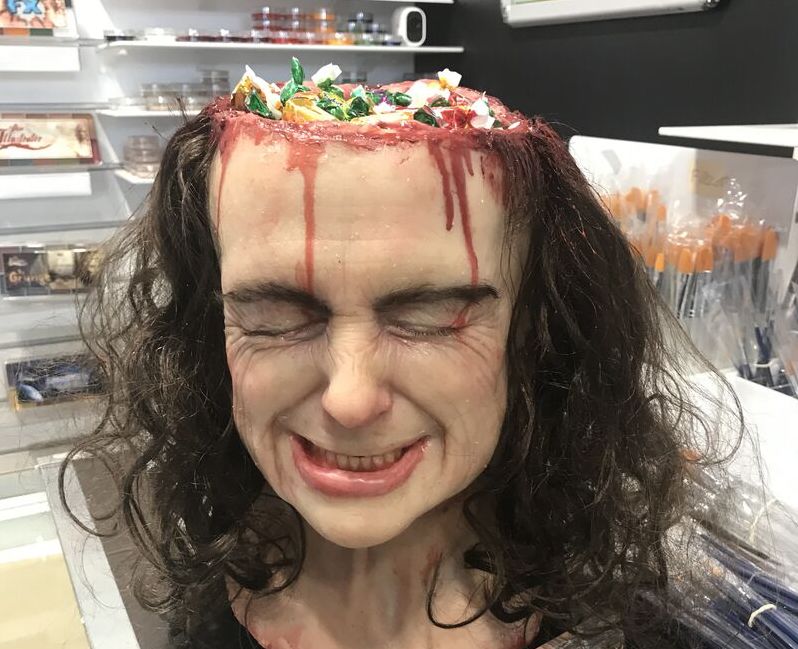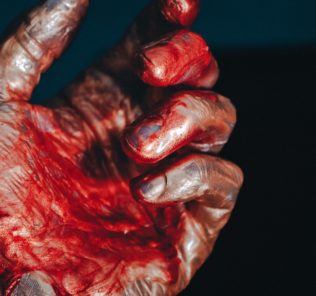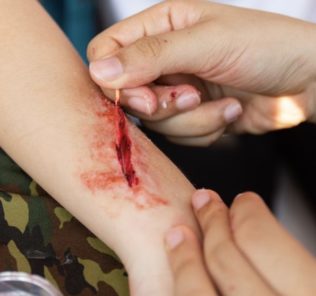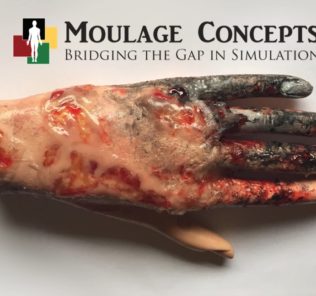Halloween Moulage Makes Clinical Simulation Patients More Realistic
Halloween Moulage found throughout October can inspire realistic clinical simulation patient presentations for the remainder of the year! Moulage is a specialty field within healthcare simulation that combines artistry with medical accuracy so learners can experience treating the patient in a way that feels most realistic. These simulated injuries serve training purposes across emergency response teams, healthcare learner programs and military personnel, but their realism can surely cause a spook during the Halloween season. With special fx makeup getting better every year, here we celebrate Halloween with some awesome moulage highlights we’ve seen recently!
While many simulation centers and educational institutions use funds to purchase high-fidelity moulage products, learners can use home products to create moulage of their own. Everyday products that can be used to create this DIY moulage include petroleum jelly, baking soda, cocoa powder, jello, paper towels and eyeshadow.
Together, these products can be used and manipulated to create moulage representing injuries such as gunshot wounds, burns, scrapes, lacerations, eviscerations, bites, ulcers, exposed muscle, etc. The level of realism presented by these products can be quite shocking, but is necessary to train learners using healthcare simulation on what to expect in real-life situations. These injuries can be quite jarring, but through repeated experience, seeing them represented by simulation can make the physical injuries less startling in clinical scenarios.
Sponsored Content:
Brian Wallenburg, Simulation Specialist & Clinical Faculty at USD Sanford School of Medicine, shared this ghoulish image on Facebook connecting Halloween Moulage to Clinical Simulation:
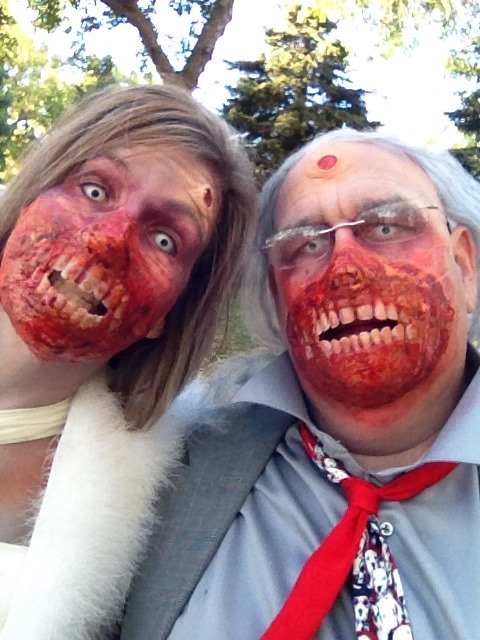
The featured article image above is from MEDICFX, and while cheeky, demonstrates the level of realism modern day moulage task trainers can achieve. MEDICFX is a casualty and simulation device company headquartered in New Zealand. The company specializes in highly realistic silicone, educational devices for sim labs, militaries, first responders, accident and emergency departments and in-house hospital trainings.
One example, one particularly gross moulage demonstrated by the Mayo Clinic in Jacksonville, Florida, is pus pockets. A pus pocket includes a single piece of large bubble wrap that is filled with a mixture of lotion, yellow food coloring and water. This is then placed under a piece of fake skin, where a learner can practice incising the skin, squeezing and draining the cyst and removing the cyst wall.
Sponsored Content:
Located in Chico, California, Moulage Concepts is a company that has been producing moulage since 2009. The company also creates high-quality, lifelike moulage products to help bridge the gap between training and performance. Founded by CEO Bobbie Merica, Moulage Concepts’ products range from military moulage staged wounds, cyanosis, mottling, blisters that rupture, burns, epidemic / pandemic, sutured wounds, odors and just about everything in between.
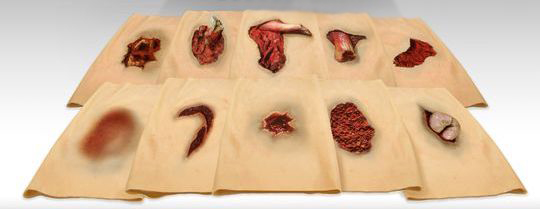
Halloween Special Effect Explosion Wound Moulage Tutorial
Moulage Concepts’ offers some extremely real-looking trauma injuries that could be useful for the creation of Halloween special effects. The company’s industrial wound burn to secondary explosion is a moulage recipe that could create a startling Halloween look. Designed for an intermediate simulation skill level and takes just eight to 10 minutes to create (excluding the time needed to dry).
Ingredients needed for this moulage simulation include 2 tablespoons of water-based lubricating gel, 2 teaspoons of petroleum jelly, (SIM-Safe) yellow colorant, (SIM-Safe) brown colorant and the SIM-Safe “decaying matter” odor. Supplies required are moulage flesh gel, setting translucent powder, black non-staining make-up, red non-staining burn make-up, and non-staining maroon make-up.
For equipment, learners will need a tongue depressor, small paintbrush, large paintbrush and make-up sponge. Then to create the moulage the learner will use a small paintbrush and spread a thin layer (approximately 1/8 inch thick) of combined moulage flesh gel over the skin. This gel should stretch upward to create a large abstract shaped approximately 3 inches by 4 inches.
Working quickly, the learner should blend the outer perimeter into skin. Learners should blend the outer perimeter using the flat edge of a utensil, smoothing the perimeter of the gel edges outward, thinning the material. Air drying should take two to three minutes (depending on humidity).
Next, use the end of a tongue depressor or rounded edge instrument to create large indentations or craters into the moulage, lifting carefully along the edge to create a skin edge. Apply translucent setting powder to “degloss” the gel and blend into the simulation manikin’s skin tone. Using a make-up sponge that has been dipped in powder (gently tap edge of brush to container to release the excess powder), blot the surface of the gel until matte or no longer shiny.
To create wound dimension, the learner should use a small paintbrush that has been dipped in a red moulage gel and paint the skin surface. They should focus on painting the inside of the exposed area or crater using a gentle blotting motion. With the tip of the brush, the next step is to coat the inside skin surface, again blotting lightly as the gel dries to create wound depth and visual texture.
Use a large paintbrush that has been slightly dipped into red make-up, (to the lower edges of the brush only to create first-degree burns and abrasions by applying reddening to the skin using a gently blotting technique. A large paintbrush should then be dipped into the maroon make-up to create areas of texture by applying maroon color randomly over the reddened skin areas.
Lastly, black make-up applied to the manikin will create smoke residual and char marks. Learners should blot the black colorant over the skin, edges of clothing and hairline. This moulage can be used in conjunction with smoke odors, explosion odors and vomitus to add even more realistic features.
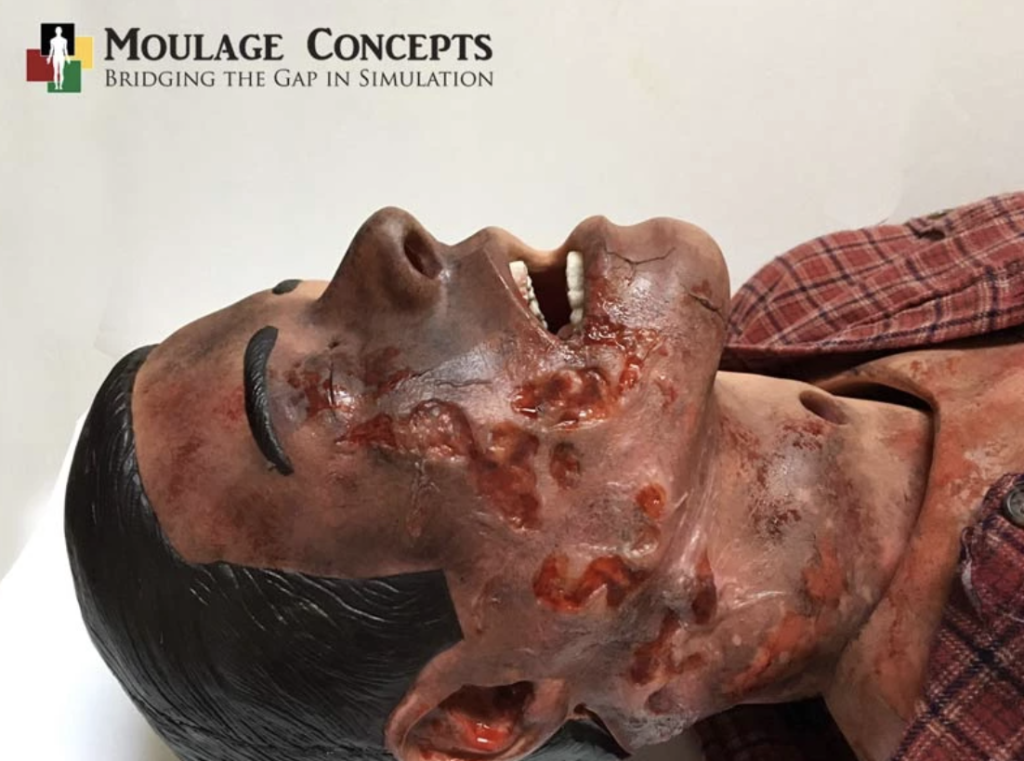
When the time comes to clean up and store the explosion trauma moulage, learners should carefully remove the burn wound from the simulator using a soft cloth. They should be sure to lift the wound around the edges of the gel. With gentle upward motion, the learner must continue to peel away the wound until all the gel has been released from the skin. The final step is to use a soft clean cloth or make-up remover towel to remove the make-up and any remaining product residue from the skin per the manufacturer’s instructions.
Want to learn more about moulage? In 2009, Merica helped author the book “Medical Moulage: How to Make Your Simulations Come Alive” to further educate learners through high-fidelity moulage usage. This comprehensive book helps users make their simulations come alive by offering 300 special effects recipes and scenarios for field and clinical simulations.
Learn More at MoulageConcepts.com!
Lance Baily, BA, EMT-B, is the Founder & CEO of HealthySimulation.com, which he started while serving as the Director of the Nevada System of Higher Education’s Clinical Simulation Center of Las Vegas back in 2010. Lance is also the Founder and acting Advisor to the Board of SimGHOSTS.org, the world’s only non-profit organization dedicated to supporting professionals operating healthcare simulation technologies. His co-edited Book: “Comprehensive Healthcare Simulation: Operations, Technology, and Innovative Practice” is cited as a key source for professional certification in the industry. Lance’s background also includes serving as a Simulation Technology Specialist for the LA Community College District, EMS fire fighting, Hollywood movie production, rescue diving, and global travel. He and his wife Abigail Baily, PhD live in Las Vegas, Nevada with their two amazing daughters.
Sponsored Content:



